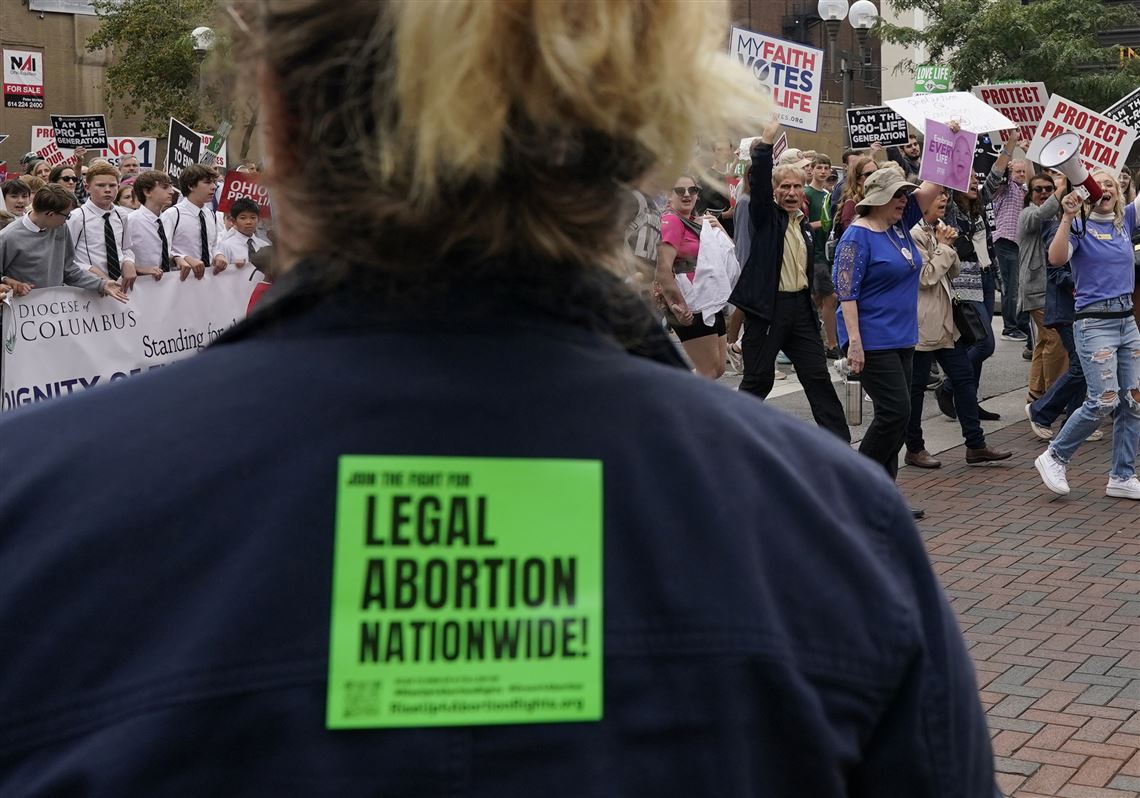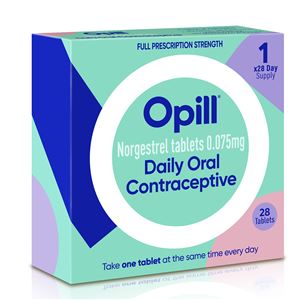As the 51st anniversary of the passage of Roe v. Wade is marked Monday, just a day before the first presidential primary of the year, one thing is clear: Reproductive rights are poised to be one of the most important, and divisive, issues of the 2024 election.
Much has changed since that landmark 1973 Supreme Court ruling, including the highest court’s repeal of the federal right to an abortion with 2022’s Dobbs decision, and the underscoring of the role of states in the issue.
Discussions regarding the right to abortion have grown more politicized and contentious and have played out against a shifting landscape that includes steady majority support from Americans, the advent of telehealth and an increase in medication abortion access. All combine to create a new normal of ever-changing laws and access from state to state, predicted to culminate in a high-stakes election year.
“This is the biggest election in terms of abortion that I’ve lived through and any of us have lived through to date,” said Mary Ziegler, a professor of law at UC Davis and a leading abortion historian.
One major change since the 1970s is that abortion is now a partisan issue.
“That was not true in 1973. It was hard to be a single-issue voter,” said Ms. Ziegler. “In 1976, neither candidate had a very clear position on abortion.”
Stances on abortion rights among politicians now fall mainly along party lines, stymying progress for one party when the other holds the majority vote.
“Abortion is a crime again, but it’s being more harshly punished than it ever was in the past,” said Ms. Ziegler. “And it’s being harshly punished at a time when Americans overwhelmingly don’t want it to be.”
Indeed, the general public’s support for reproductive freedom remains high. According to a 2022 Pew Research Center poll that was released a couple of months before the Dobbs decision, 61% of Americans supported abortion in all or most cases. That position has remained relatively steady since 1995, the poll shows.
“Between Roe and Dobbs, abortion attitudes were pretty static, if you look at the polling,” said David S. Cohen, a law professor at Drexel University who specializes in abortion law.
“But I think we’ve seen a change post-Dobbs with more people supporting abortions,” he said. “And I think the Supreme Court’s decision has really galvanized people to rethink this issue, or to think more closely about it, and realize that they don’t want the government involved in their health care and their bodily autonomy.”
Opposition, however, remains strong, as evidenced by the thousands of people who attended the annual March for Life in Washington, D.C., on Friday.
Still, Joanne Rosen, an abortion law and public health researcher at the Johns Hopkins Bloomberg School of Public Health, agreed that support for reproductive freedom has remained strong since Dobbs.
“When voters are given the ability to speak through ballot initiatives or other measures, they make clear that they care about who has the power to make these decisions,” she said. “And they believe that the freedom … over incredibly personal and consequential reproductive decisions should be made by the person, and not by the state.”
This played out in Ohio in November, when, via a ballot measure known as Issue I, voters were given the choice of supporting or rejecting a state constitutional amendment guaranteeing the right to an abortion. Support for the amendment saw a 57% majority at the polls despite both a Republican-led House and Senate in Ohio.
“Issue I was a huge win in fixing a problem created by lawmakers,” said Lauren Blauvelt, executive director of Planned Parenthood Advocates of Ohio and co-chair of Ohioans United for Reproductive Rights.
Ohio House Rep. Bill Dean, R-Xenia, declined to comment for this story and House Rep. Jennifer Gross, R-West Chester, did not respond to repeated requests for comment.
While abortion is legal through 23 weeks gestation in Pennsylvania (with some restrictions, such as a 24-hour waiting period and parental informant laws), some state lawmakers are looking to solidify protections. House Bill 1888, introduced by Rep. Danielle Friel Otten, D-Chester, would add a constitutional right to the procedure in the commonwealth.
With a Republican-led Senate, the bill is not likely to pass during the current legislative session, and the House Bill would need to make it through two sessions of voting in the House and Senate before being seen by voters on the ballot. Senate Judiciary Committee Chair Lisa Baker, R-Luzerne, did not respond to repeated requests for comment.
Additionally, House Democrats, led by Tarik Khan, D-Philadelphia, on Monday plan to announce legislation “to make safe abortion access easier in Pennsylvania,” according to a news release. The legislation will look to lift “the requirement that abortion facilities meet the same regulations as ambulatory surgical centers,” according to a co-sponsorship memo shared with the Post-Gazette.
Also at the state level is the so-called Bodily Autonomy Bill, led by Kristine Howard, D-Chester, which would transfer abortion from the criminal code to the health code. A spokesperson for Rep. Howard declined to speak on the record. New York did this in 2019 with the passage of the Reproductive Health Act, signed into law by then-Gov. Andrew Cuomo.
Since the repeal of Roe v. Wade, abortion access and the laws that either allow or prohibit it have transformed into a “50-state patchwork,” said Ms. Rosen. While Pennsylvania sews its own square into the quilt of abortion-related laws, it’s also shouldered a burden of travelers from states with more restrictive laws.
Per data from the Pennsylvania Department of Health’s recently released 2022 abortion statistics report, the state saw a 60% increase in abortions performed on Ohio residents, and a 16% increase in those from West Virginia.
Adarsh Krishen, chief medical officer of Planned Parenthood of Greater Ohio, which operates 18 sites, said that fact did not surprise him.
“The [eight years] I’ve been CMO has been fraught with constant legislative assaults on abortion care and access to care within Ohio,” he said.
Pennsylvania clinics were swamped immediately following the Dobbs decision, as Ohio’s “Heartbeat Law” went into effect within 12 hours of the ruling, banning abortion after a heartbeat is detected, at around six weeks and before many know they are pregnant.
And quarterly reports from the DOH around that time show a 19% increase in total abortions performed at Allegheny County clinics post-Dobbs. Allegheny Reproductive Health Center, one of six known clinics providing the procedure in the area, performed 41% more abortions in the second half of 2022 than in the first.
“There are a lot of complicating factors in the various interpretations of the law,” said Mr. Cohen. “But I think what’s important right now is that if they have the resources and the time, people are traveling freely across the lines to get abortions. And there’s a lot of support for them to do so in terms of money and resources from organizations.”
As legality has shifted, providers in Ohio have needed to remain agile.
“Friday, Dobbs went down, and that Saturday, we were having to call those patients and find out how we could help and assist them to get the health care they needed,” Dr. Krishen said.
Ultimately, the ACLU, Planned Parenthood Federation of America, the law firm WilmerHale and Cleveland abortion clinic Preterm sought an injunction that temporarily paused the Heartbeat Law. The state filed an appeal against the injunction, which the Ohio Supreme Court dismissed.
Ohio experienced a 21% reduction in abortions in 2022 versus 2021, according to data from the Ohio Department of Health. Another report showed a drop in the average monthly abortions in Ohio by 1,000 immediately following the Dobbs decision.
That’s reflected in what Antony Fair, the communications manager for Preterm, has seen. On average, he said, the clinic performs 200 to 250 abortions per month. During the three months the Heartbeat Law was in effect, it barely performed 150 a month.
Another main shift in reproductive health care involves the increase in availability and use of abortion pills, namely mifepristone and misoprostol, which are approved by the FDA through 10 weeks gestation and often used together to induce an abortion. Both national and local data show that medication abortions now account for more than half of all given. And with the rise of telehealth, many patients don’t need to step foot in a doctor’s office to procure them.
This has created another potential avenue for federal restrictions. In November 2022, for instance, doctors and members of organizations including the American Association of Pro-Life Obstetricians and Gynecologists filed a lawsuit in Texas against the Food and Drug Administration, alleging that the approval and deregulation of mifepristone was unlawful and failed women and girls by “repeatedly removing even the most basic precautionary requirements associated with their use.”
“It’s safe, it’s effective, it’s evidence-based,” said Sarah Horvath, an assistant professor at Penn State Health in Hershey and an OB/GYN. “From a patient perspective, it can allow for privacy … and we know that patients often will opt for this.”
And as mifepristone has clinical uses outside of abortion, such as for hormone and uterine imbalances, Dr. Horvath said the lawsuit “feels very much like an argument that’s been made outside of the evidence, the science and the medicine.”
An application to halt legal proceedings of the Texas case was filed with U.S. Supreme Court Justice Sam Alito in April, according to the court. But the lawsuit perked the antennae of physicians and supporters of abortion rights as another potential avenue to further restrict reproductive freedoms at the national level.
“If there were another commissioner of the FDA, appointed by a different administration … we could potentially see mifepristone removed from the market,” said Ms. Rosen.
Additional scenarios are emerging on the abortion rights battleground, said Ms. Ziegler: Congress could pass its own national abortion ban; the breakdown of the Supreme Court could shift to support a ban; and some legislators are exploring the passing of ordinances called “sanctuary cities for the unborn,” which would restrict reproductive care in certain communities regardless of state laws.
Another potential approach at the federal level is application of the Comstock Act, a 19th century law that prohibited the mailing of “obscene, lewd or lascivious” items. While it did not directly address the prevention of abortion, the act could be pursued as a legal loophole used to install a national ban.
“Courts haven’t interpreted the Comstock Act as an abortion ban since the 1930s,” said Ms. Ziegler.
“There are a lot of ways in which the federal government under an anti-abortion president could make it much more difficult for people to get abortions, and maybe even impossible,” said Mr. Cohen. “There’s reason to fear that if Donald Trump] were to win the presidency, he would put people in the Department of Justice who would read the Comstock that way.”
Hanna Webster: hwebster@post-gazette.com
Corrections: The graphic in this story was to reflect corrected percentages for changes by state of abortions before and after June 2022. Lauren Blauvelt’s title was updated to reflect her current position, executive director of Planned Parenthood Advocates of Ohio.
First Published: January 22, 2024, 10:30 a.m.
Updated: January 22, 2024, 9:00 p.m.










